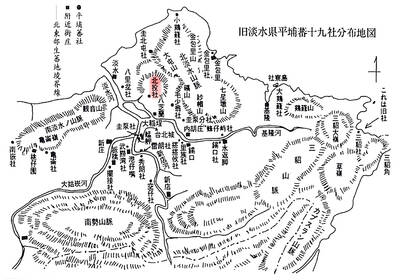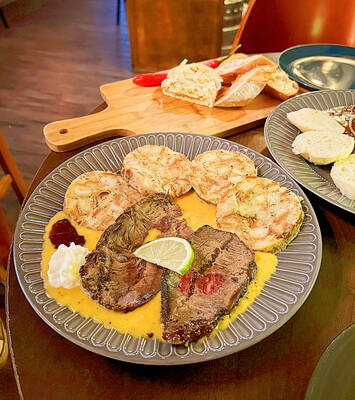In a village without roofs, the grass grows on bedroom floors. In the fields, there are weeds where maize used to grow. On a blackened wall, a message is written in charcoal: “One day, one time, all these will be a thing of the past.”
A yellow-billed kite soars high above the patch of ground where the Kenya Assemblies of God church stood. Small scraps of burnt clothing litter the earth — memories of the dead not yet buried.
Many of the living have moved far from the ghosts of Kiambaa. Hundreds more, including 40-year-old Grace Githuthwa, can be found crammed inside tiny white tents behind a police post that was built too late to matter.
Kenya’s worst-ever ethnic violence was sparked by a presidential election held a year ago yesterday. At least 1,300 people died and more than 300,000 fled their homes. Since then, an internationally brokered peace deal to end the strife has held, and the coalition government is intact. Tourists have returned to the game parks and beaches.
But for many victims, the struggle to rebuild lives has barely begun. About 80,000 people displaced last January have yet to be resettled, according to a recent report by the Kenya Human Rights Commission. One issue is money. The other reason, especially in Kiambaa, is fear. “How can we live here after what happened?” asked Githuthwa.
The fires began on New Year’s Eve. Githuthwa received a panicked call from her parents. Mobs of young Kalenjin men were burning houses of Kikuyu families, the ethnic group of President Mwai Kibaki, who had been declared the winner of the dubious poll. The attackers’ fury was only partly political: in the Rift Valley the Kikuyu had long been perceived as interlopers.
Githuthwa, a passion-fruit farmer, decided it was too dangerous to stay at home. With her husband, Simon, their two sons, two daughters and three-year-old niece, Miriam, visiting from Nairobi for Christmas, they spent the night outside the nearby Kenya Assemblies of God church. By mid-morning on New Year’s Day, when the smoke was rising from nearby homes and the war songs were getting louder, hundreds of Kikuyu had crammed into the church.
The attackers, their faces painted white, locked the church door. Paraffin-soaked mattresses were pushed against the windows. A match was struck.
Githuthwa’s children managed to force their way out through the window. She followed, with Miriam in her arms. A young Kalenjin man ripped Miriam away, and threw her back into the inferno. “Life is not forever,” he shouted at Githuthwa, beating her away.
As she fled she found Simon lying by the road. His head was bleeding. A good Samaritan — a Kalenjin man — took Simon to hospital in his car.
The next morning, as Red Cross workers pulled tiny charred bodies from the embers, Githuthwa hoped that somehow Miriam had survived.
The local mortuary received 35 corpses. The bodies, many of them burned beyond recognition, remain today in nearby Eldoret. Most are still unidentified; DNA results have not yet been released.
AFTERMATH
In the two weeks after the attack, the Githuthwa family endured the cold nights outside the main Catholic church in Eldoret. Conditions were scarcely better after they were moved to makeshift tents in the town’s agricultural showground, along with 20,000 others.
Many other Kiambaan residents had left, going hundreds of kilometers away to relatives in Nairobi or Central province, the traditional Kikuyu heartland. But the families of Githuthwa and her husband had lived around Eldoret since independence; they had nowhere “safe” to go. In May they were shifted again. Under Operation Return Home, designed to empty the camps, they were promised about US$120 to cover basic needs, and a further US$300 for shelter.
But human rights organizations say that the payouts were poorly handled. Many victims — Githuthwa included — say they never received any money. Tens of thousands of people were merely shifted to smaller camps.
The 60 families dropped off in Kiambaa found it deserted except for a few Kalenjin families, a few Luhya, and David Gichie, the only Kikuyu. Together with his pregnant wife Noelina and their seven-year-old daughter, Mary-Rose, Gichie had been in western Kenya over the New Year period and only heard about the church attack on television.
He returned months later to find his house, like virtually all the others owned by Kikuyu, gutted by fire. He moved into a corner bedroom with smoke-stained walls. A sack covers the hole left by the missing window; an iron sheet is the makeshift ceiling.
The house is owned by his sister Jane, who taught at the local school for 18 years. She had written the messages on the living-room wall: “This house will one day be a symbol of forgiveness.”
But that day has not yet come. Jane now lives and works in Nakuru, 130km west, too traumatized to move back.
So is Stephen Mburu, 44, the church pastor, who was there when the fire began. He has set up a new congregation in Eldoret town, leaving the grass to grow thigh-high through the dirt floor of his house. Eight false teeth and two large scars on his head are a daily reminder of what happened. The more painful wounds are inside.
“What I saw there … the bodies … I can’t live in that environment.”
In June Githuthwa returned to the church with a man who had lost his wife to the fire. Among the dirt and ashes he located a strip of her dress. Githuthwa found a piece of Miriam’s blue jacket.
“My brother [Miriam’s father] came here and told me there was nothing more I could have done,” she said. Tears formed in her eyes. Members of the government talk of burying the victims’ remains on Jan. 1, 2009, but few here are willing to believe them.
‘TOO VOLATILE’
Neither Kibaki nor the opposition leader and prime minister, Raila Odinga, have visited the site. When a group of women representing more than 3,000 displaced people still living in tents recently traveled to Nairobi to protest at their treatment, police fired teargas at them. “The government of Moi [former president Daniel Arap Moi, a Kalenjin] was better,” said Githuthwa. “This one has forgotten about us.”
Reconciliation meetings between Kalenjin and Kikuyu are under way in parts of the Rift Valley. But James Kimisoi, program coordinator in the Catholic diocese of Eldoret, which is leading the peace effort, said that the underlying issue of land ownership had not even begun to be discussed. Kiambaa remained “too volatile” for peace talks to begin, he said.
Part of the reason is the ongoing trial of four Kalenjin men accused of involvement in the church attack. Despite threats from local men, Githuthwa is one of the 56 witnesses to have testified.
One of those charged with murder is Julius Rono. “The Kikuyu have testified against my husband even though he was not involved,” said his wife Helen Rono. “I feel bitter; they get food from the Red Cross but who can provide for me?”
A short walk away, Githuthwa was looking at the ruins of her house. A pumpkin plant grew where the dining room used to be. She shook her head. “Sometimes it’s better to be killed than to be hurt,” she said.

Seven hundred job applications. One interview. Marco Mascaro arrived in Taiwan last year with a PhD in engineering physics and years of experience at a European research center. He thought his Gold Card would guarantee him a foothold in Taiwan’s job market. “It’s marketed as if Taiwan really needs you,” the 33-year-old Italian says. “The reality is that companies here don’t really need us.” The Employment Gold Card was designed to fix Taiwan’s labor shortage by offering foreign professionals a combined resident visa and open work permit valid for three years. But for many, like Mascaro, the welcome mat ends at the door. A

The Western media once again enthusiastically forwarded Beijing’s talking points on Japanese Prime Minister Sanae Takaichi’s comment two weeks ago that an attack by the People’s Republic of China (PRC) on Taiwan was an existential threat to Japan and would trigger Japanese military intervention in defense of Taiwan. The predictable reach for clickbait meant that a string of teachable moments was lost, “like tears in the rain.” Again. The Economist led the way, assigning the blame to the victim. “Takaichi Sanae was bound to rile China sooner rather than later,” the magazine asserted. It then explained: “Japan’s new prime minister is

NOV. 24 to NOV. 30 It wasn’t famine, disaster or war that drove the people of Soansai to flee their homeland, but a blanket-stealing demon. At least that’s how Poan Yu-pie (潘有秘), a resident of the Indigenous settlement of Kipatauw in what is today Taipei’s Beitou District (北投), told it to Japanese anthropologist Kanori Ino in 1897. Unable to sleep out of fear, the villagers built a raft large enough to fit everyone and set sail. They drifted for days before arriving at what is now Shenao Port (深奧) on Taiwan’s north coast,

Divadlo feels like your warm neighborhood slice of home — even if you’ve only ever spent a few days in Prague, like myself. A projector is screening retro animations by Czech director Karel Zeman, the shelves are lined with books and vinyl, and the owner will sit with you to share stories over a glass of pear brandy. The food is also fantastic, not just a new cultural experience but filled with nostalgia, recipes from home and laden with soul-warming carbs, perfect as the weather turns chilly. A Prague native, Kaio Picha has been in Taipei for 13 years and